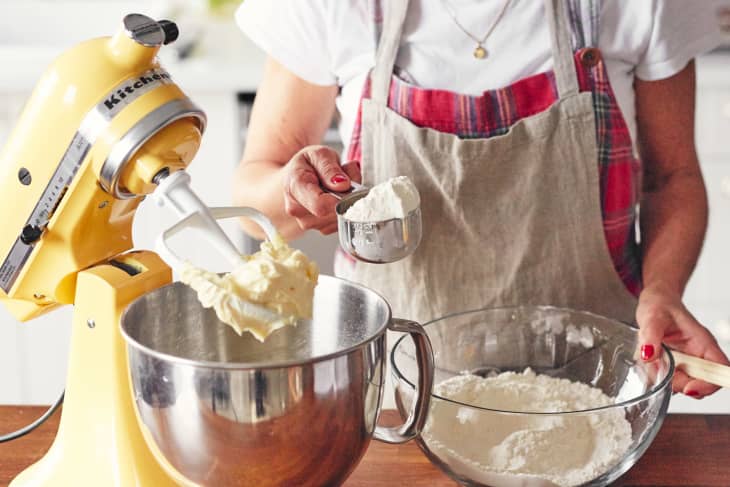Shortening vs. Butter in Cookies: What’s the Difference?
Two of the most commonly used fats in cookie dough are butter and shortening. They’re mostly used alone, but sometimes a recipe will actually have you use a combination of both. With products like butter-flavored shortening on the market now, does it really matter which one you use? Are the two interchangeable? Let’s take a look at each one and see how they work in cookies.
What Does Fat Do in Cookies?
Fat is one of the big factors in what makes cookies so delicious — it tenderizes by coating the gluten molecules in flour so they don’t combine as easily and toughen the finished product.
Fats also add moisture and, when creamed together with sugar, help form little pockets of air to create a fluffier texture. And of course, fat helps carry flavors and, in some cases like butter, have delicious flavors themselves. So the role of fat in cookies? Super important.
Let’s take a look at each one and how they work in cookies:
Butter in Cookies
Butter is by far the most popular fat used in cookies — for good reason. It just adds such a delicious flavor and richness! Butter is not composed of all fat, though: Butter made in the United States must contain at least 80 percent fat and no more than 16 percent water, whereas European butter generally has a higher fat content of 82 to 85 percent.
This combination of fat and water is what makes butter unique: The heat from the oven during baking turns that water into steam, which can cause more gluten formation, resulting in crisper cookies if baked long enough.
Butter also has a lower melting point, which means that the fat melts at a lower temperature and the cookies will spread and flatten out faster during baking. It also has a distinct creamy flavor, which is what makes cookies so tasty.
Shortening in Cookies
Vegetable shortening is a solid fat made from vegetable oils, like soybean or cottonseed. It was traditionally made by transforming oil to a solid through partial hydrogenation, resulting in trans fats. Now there are shortenings available where the oil undergoes complete hydrogenation instead, resulting in saturated fat instead of trans fat.
Shortening is 100 percent fat, meaning there is no water in it and no steam is created during baking. The lack of water also means that shortening does not increase gluten production, so cookies made with shortening tend to be softer and more tender.
Shortening has a higher melting point, so the flour and eggs in the cookies have extra time to set before the shortening melts, resulting in cookies that are taller and not as flat. It has no real distinct flavor, although butter-flavored shortenings are now available.
Which One Should I Use in Cookies?
Basically, cookies made with butter spread more and are flatter and crisper if baked long enough. However, they are more flavorful than cookies made with shortening.
Cookies made with shortening bake up taller and are more tender, but aren’t as flavorful.
Can Butter and Shortening Be Used Interchangeably in Cookies?
Butter and shortening can generally be substituted for each other in cookie recipes if you keep a few things in mind: Since butter does contain water and less fat than shortening, you’ll need to use more of it as a substitution. Also keep in the mind that the textures and shapes of the cookies will be different, due to moisture content and melting points.
If you want to get the best of both worlds — buttery flavor, but tenderness too — use a combination of butter and shortening. Don’t, however, substitute butter with shortening in cookies like shortbreads or sugar cookies, where butter really is a key flavoring.
